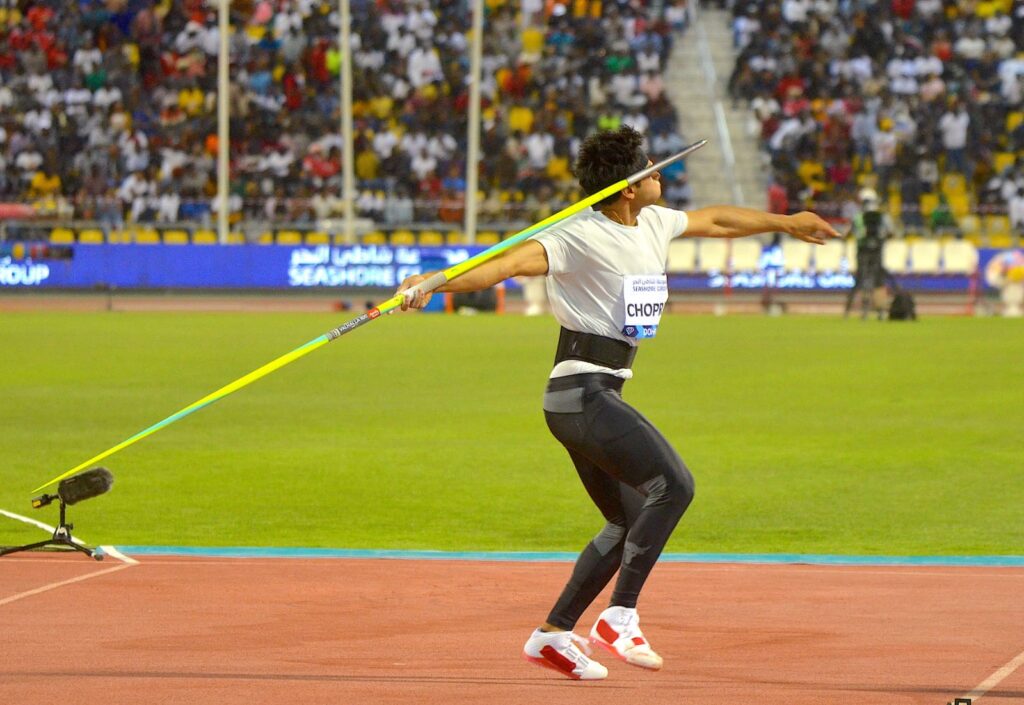
Around four years ago, Neeraj Chopra, then Asian and Commonwealth Games champion in the javelin throw, posted an update on his Instagram handle. “Undergone elbow surgery in Mumbai by Dr. Dinshaw Pardiwala,” it said. “Will require some months of rehabilitation before I can start back with throwing. Hoping to return stronger. Every setback is a setup for a comeback. God wants to bring you out better than you were before.”
Neeraj had undergone a surgery to remove bone fragments in his elbow, which were causing him acute discomfort. Soon, summer gave way to the rainy season and then spring, and hardcore sports fans in India waited anxiously for Neeraj to return to action. There was finally a sigh of relief when he was seen practicing with a medicine ball at the NWU Village ahead of an athletics meet in Potchefstroom.
Remarkably, in his first competition since that debilitating injury, Neeraj comfortably cleared the Olympics Games’ qualifying mark of 85 metres with a throw of 87.86m. He walked the talk and made a sterling comeback. Unfortunately for Neeraj, in early 2020, the Covid-19 pandemic was raging across the globe. Although the Sports Authority of India (SAI) mapped around 107 athletes and sent the required equipment to their doorsteps, they could not participate in competitions in Europe due to travel restrictions and the cancellation of events. Even the Tokyo Olympics was postponed by a year.
In 2021, India was also categorised as a high-risk country for Covid-19 infection. Thus, Neeraj even needed an internal authorization letter issued by the French Interior Ministry to travel to France. His visa application to travel to Sweden in order to train for the Olympics was also rejected before the Sports Ministry and the External Affairs Ministry stepped in to ensure that it was cleared.
Also Read: Neeraj Chopra starts with a bang winning the Doha Diamond League
“If we don’t play competitions, then what is the use of the training?” Neeraj had asked in a virtual media conference organised by SAI. “We are training since last year, but we need international competitions. If we are thinking about the Olympic level, then we also need to compete with those athletes. I don’t have any experience of playing in the Olympics, this will be my first time.”
Ultimately, he was cleared to participate in some of the events in Europe, which acted as a preparation for the Olympics. A month or two later, he was standing on the podium in Tokyo with a Gold Medal. It is true that Neeraj’s achievement would be written with indelible ink in the annals of Indian sport. But for a moment, let’s delve deeper into one of India’s finest sporting moments.
At the Tokyo Olympics, in Round 1, in slightly different conditions compared to what you get to see in Europe, Neeraj modified his technique and and threw it relatively flatter to qualify for the final. He then went on to win Gold Medal with a best of 87.58m. Meanwhile, Johannes Vetter, the overwhelming favourite, who had thrown over 90m as many as seven times during that season, couldn’t even qualify for the final stage of the event. Incidentally, before the Olympics, Vetter had said, “I am looking to throw over 90m in Tokyo, so it will be tough for him (Neeraj) to beat me.” Instead of responding to that comment, Neeraj quietly went about his job and emerged triumphant.
After the Javelin final, Vetter said to Athletics Asia: “If you watch the throws again, you can see it is not the right surface for me. It’s a good surface for all the runners, for all the nice world records and Olympic records on the track, but not for javelin throwers like me. It really makes me sad. It’s like driving a car autopilot. You can’t brake and I have to brake to throw far.”
A year later, in 2022, Neeraj was an epitome of consistency in terms of the distances he threw: 89.94m in Stockholm (his personal best), 89.30m in Finland, 89.08m in Lausanne, 88.39m and 88.13m at the World Athletics Championships held in Oregon. Even on a wet track, in the Kuortane games, he ended up with an impressive throw of 86.69m. Neeraj has also started the current season on the right note, winning the Doha Diamond League with a top throw of 88.67m. And it came in conditions where he was up against stiff wind.
For a casual sports follower, watching the javelin event, it may seem like a sport that requires only brawn in order to throw the spear as far as possible. But in reality, it is a very technical sport. It demands “a synergy of muscles and joints to throw the 800g, 2.5m long spear”. It also demands that an athlete understands the conditions, and tweaks his or her technique ever so slightly. In Europe, there could be cooler climes compared to hot and humid conditions when an event takes place somewhere in Asia. The wind plays a massive role as well. So a lot of things have to fall in place for an athlete to find his groove and make a top throw.
In that backdrop, Neeraj’s near-unfaltering consistency, especially over the last couple of seasons, leaves you in a state of wonderment. He is akin to a prolific painter, whose passion and love for his sport pushes him to improve by fractions and percentages. And as a result, he is able to deliver his best time and again on the global stage.
Also Read: Neeraj Chopra embraces pressure, draws support and basks in adulation in Doha Diamond League



